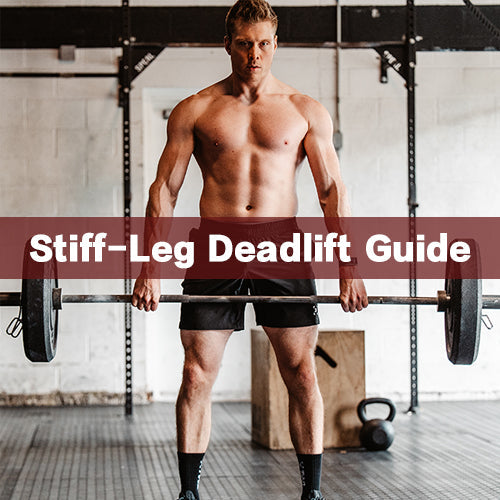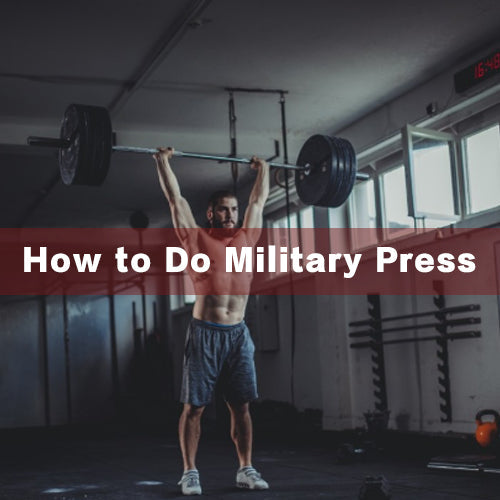Unlock the secrets of a stronger, more resilient body with hyperextensions—the hidden gem of fitness routines that sculpt your lower back, ignite your glutes, and empower your hamstrings.
Dive into this transformative guide where we unravel the power of hyperextensions, exploring their myriad benefits, dynamic variations, and essential safety protocols to ensure you harness their full potential, sculpting a physique that commands attention and performs with unparalleled excellence.
Table of content
Understanding Hyperextensions
What Are Hyperextensions?
Hyperextensions, also known as back extensions or Roman chair exercises, are a strength training movement that primarily targets the lower back muscles, glutes, and hamstrings. Picture yourself lying face down on a specialized bench, your hips at the edge, and your upper body hanging freely. You lift your torso from this position until it's in line with your legs, then lower back down. This simple yet effective movement engages multiple muscle groups and offers a myriad of benefits.
Reverse Hyper Vs Back Extensions

3 Key Differences
- Muscle emphasis: Back extensions primarily target the lower back, while reverse hypers emphasize the hamstrings and glutes.
- Range of motion: Reverse hypers generally offer a greater range of motion.
- Equipment: Back extensions require a simpler setup, while reverse hypers necessitate a specific machine.
What Muscles Do Hyperextensions Work?

To truly appreciate hyperextensions, we need to understand the muscular symphony they conduct. Imagine your lower back and posterior chain as a complex machine, with hyperextensions engaging multiple muscle groups in a coordinated effort:
- Erector Spinae: This group of muscles runs along your spine, playing a crucial role in extending your back and maintaining proper posture.
- Gluteus Maximus: The largest muscle in your buttocks, crucial for hip extension and overall lower body strength.
- Hamstrings: The muscles at the back of your thighs, working in tandem with your glutes during the movement.
- Core Muscles: Your abdominals and obliques engage to stabilize your spine throughout the exercise.
- Lower Back Muscles: Including the multifidus and quadratus lumborum, which support spinal stability and extension.
How to Do Hyperextensions?
Equipment needed: Roman Chair / Hyperextension Bench, Glute-Ham Developer (GHD), 45-degree Hyperextension Bench, Stability Ball, Weight Bench, Barbell in a Rack, Additional Weights
Now that we understand the muscles involved, let's break down the perfect hyperextension. Imagine yourself as a skilled gymnast, performing each repetition with precision and control.
Starting Position: Lie face down on the hyperextension bench, with your hips just at the edge of the pad. Your feet should be secured under the foot pads. Allow your upper body to hang down towards the floor, creating a natural curve in your spine.
The Extension: Engage your core and slowly lift your torso until it forms a straight line with your legs. Imagine your body as a lever, hinging at the hips. Focus on squeezing your glutes and engaging your lower back muscles.
The Peak: At the top of the movement, your body should form a straight line from your head to your heels. Avoid hyperextending your back beyond this point.
The Descent: Slowly lower your upper body back to the starting position, maintaining control throughout the movement. This completes one repetition.
Key Points for Perfect Form:
- Keep your core engaged throughout the movement
- Avoid jerking or using momentum to lift your torso
- Breathe steadily: exhale as you lift, inhale as you lower
- Keep your neck in a neutral position, looking at the floor
The Benefits of Hyperextensions
Strengthening the Posterior Chain: The posterior chain includes muscles such as the erector spinae, glutes, and hamstrings. Strengthening these muscles through hyperextensions can improve overall athletic performance and reduce the risk of injury.
Improving Posture: Poor posture is a common issue in today's sedentary lifestyle. Hyperextensions help to counteract the effects of sitting for long periods by strengthening the muscles that support proper posture.
Preventing Lower Back Pain: Weakness in the lower back muscles is a leading cause of lower back pain. Regularly performing hyperextensions can help to strengthen these muscles, reducing the likelihood of pain and injury.
Enhancing Flexibility: Flexibility is crucial for maintaining a healthy spine. Hyperextensions help to increase spinal flexibility, which can improve range of motion and reduce the risk of injury.
Variations of Hyperextensions
1.Free Weight Hyperextensions

Free weight hyperextensions involve using a barbell or dumbbells to add resistance to the exercise. This variation is more challenging and targets the muscles more intensely, making it suitable for intermediate to advanced lifters.
2.Bodyweight Hyperextensions

Bodyweight hyperextensions can be performed without any equipment, using a flat bench or the floor. This variation is ideal for those who prefer a minimalist approach or are limited by their environment.
3.Stability Ball Hyperextensions

Stability ball hyperextensions involve lying face down on a stability ball and performing the extension movement. This variation adds an element of instability, challenging the core muscles to stabilize the body during the exercise.
4.Cable Hyperextensions

Cable hyperextensions use a cable machine to provide resistance. This variation allows for a more controlled and isolated movement, targeting the lower back and hamstrings effectively.
5.Resistance Band Hyperextensions

Using a resistance band around the thighs can add an extra challenge to the movement and target the hip extensors more effectively.
Safety Tips for Hyperextensions
1.Proper Form
Maintaining proper form is crucial when performing hyperextensions. Keep your back straight and avoid rounding your spine, which can lead to injury. Focus on contracting the targeted muscles throughout the movement.
2.Gradual Progression
Start with lighter weights or bodyweight exercises and gradually increase the resistance as your strength improves. Avoid overexerting yourself, as this can lead to strain or injury.
3.Warm-Up
Always warm up before performing hyperextensions to prepare your muscles and reduce the risk of injury. A combination of dynamic stretches and light cardio can effectively warm up the body.
4.Listen to Your Body
Pay attention to any pain or discomfort during the exercise. If you experience pain, stop immediately and consult a healthcare professional.
5.Cool Down
After completing your hyperextensions, perform a cool-down routine to help your muscles recover. Static stretching of the lower back, glutes, and hamstrings can be beneficial.
Hyperextension Alternative
These exercises can be performed with or without equipment, making them versatile options for different fitness levels and settings.
1.Good Mornings

Muscles Targeted: Lower back, glutes, hamstrings
How to Do It:
- Stand with your feet shoulder-width apart, holding a barbell across your upper back.
- Keeping your back straight and core engaged, hinge at the hips, lowering your torso until it’s nearly parallel to the floor.
- Slowly return to the starting position by driving your hips forward.
Why It’s Effective: Good mornings mimic the hip-hinge movement of hyperextensions but with the added challenge of a barbell, making them great for building lower back and hamstring strength.
2.Superman Exercise

Muscles Targeted: Lower back, glutes, shoulders
How to Do It:
- Lie face down on a mat with your arms extended overhead.
- Simultaneously lift your arms, chest, and legs off the ground, contracting your lower back and glutes.
- Hold for a few seconds, then slowly lower back to the starting position.
Why It’s Effective: The Superman exercise isolates the lower back and glutes, making it a great bodyweight alternative to hyperextensions that can be done anywhere.
3.Reverse Hyperextensions

Muscles Targeted: Lower back, glutes, hamstrings
How to Do It:
- Lie face down on a bench or stability ball with your hips at the edge and your legs hanging off.
- Hold onto the bench or ball for stability.
- Keep your legs straight, and lift them until they align with your torso.
- Slowly lower your legs back to the starting position.
Why It’s Effective: Reverse hyperextensions specifically target the lower back and glutes, and they can be done with bodyweight or added resistance.
4.Romanian Deadlifts

Muscles Targeted: Lower back, glutes, hamstrings
How to Do It:
- Stand with your feet hip-width apart, holding a barbell or dumbbells in front of you.
- With a slight bend in your knees, hinge at the hips, lowering the weights towards your feet while keeping your back straight.
- Return to the starting position by engaging your glutes and driving your hips forward.
Why It’s Effective: Romanian deadlifts focus on the hamstrings and lower back, offering a similar movement pattern to hyperextensions.
5.Glute Bridge

Muscles Targeted: Glutes, hamstrings, lower back
How to Do It:
- Lie on your back with your knees bent and feet flat on the floor.
- Press through your heels to lift your hips towards the ceiling, squeezing your glutes and lower back.
- Hold the top position for a few seconds, then lower your hips back down.
Why It’s Effective: The bridge pose is a bodyweight exercise that targets the glutes and lower back, making it a simple yet effective alternative to hyperextensions.
6.Bird-Dog

Muscles Targeted: Lower back, core, glutes
How to Do It:
- Start on all fours with your hands under your shoulders and knees under your hips.
- Extend your right arm forward and your left leg back, keeping your back flat.
- Hold for a few seconds, then return to the starting position and switch sides.
Why It’s Effective: Bird-dog is a stability exercise that engages the lower back, glutes, and core, promoting balance and coordination.
Programming Hyperextensions: Building Your Routine

Incorporating hyperextensions into your workout routine requires thoughtful planning. Think of your workout program as a recipe, with hyperextensions as a key ingredient that needs to be balanced with other exercises.
For Beginners: Start with 2-3 sets of 10-12 repetitions, performed twice a week. Focus on mastering proper form before increasing volume or adding variations.
For Intermediate Fitness Enthusiasts: Aim for 3-4 sets of 12-15 repetitions, 2-3 times per week. Begin experimenting with different variations to keep challenging your muscles.
For Advanced Lifters: Push your limits with 4-5 sets of 15-20 repetitions, or incorporate weighted variations for lower rep ranges (8-12) to build strength. Consider super-setting hyperextensions with complementary exercises like planks or glute bridges.
Remember, these are general guidelines. Listen to your body and adjust accordingly. It's better to perform fewer reps with perfect form than to sacrifice technique for higher numbers.
FAQs
Are hyperextensions safe for everyone?
While hyperextensions can be beneficial, it's important to listen to your body. If you have any back pain or injuries, consult a healthcare professional before starting.
Can I do hyperextensions at home?
While a hyperextension bench is ideal, there are bodyweight alternatives like supermans and bird-dogs that can target similar muscle groups.
Can I add weight to hyperextensions?
Yes, you can add weight to increase the challenge as you get stronger.
Would you like to know about alternatives to hyperextensions?
How often should I do hyperextensions?
Aim for 2-3 times per week as part of your back workout routine.
Your Path to a Stronger, More Resilient You
In conclusion, let us contemplate the powerful, firm central part as well as the lower back that you are exercising for. By doing them consistently, with proper technique and commitment, they can help to improve one’s posture, make you stronger physically, and enhance your overall physical resilience in general.
Therefore, you have to understand that mastering hyperextensions is not a walk in the park but a process that takes time. Take time, therefore, remain calm and believe in this basic exercise. Actually, people who want to reduce back pain, be more athletic, or experience life generally would find something useful by engaging themselves in hyperextension.
For this reason, when you see yourself moving towards the hyperextension bench or stability ball next time, it must be done confidently with a purposeful attitude. A single repetition will bring you closer to a braver individual than earlier on. In fact from today onwards until you master core and lower back exercises- do you think you will ever extend into any new form of strengthening strategies?


